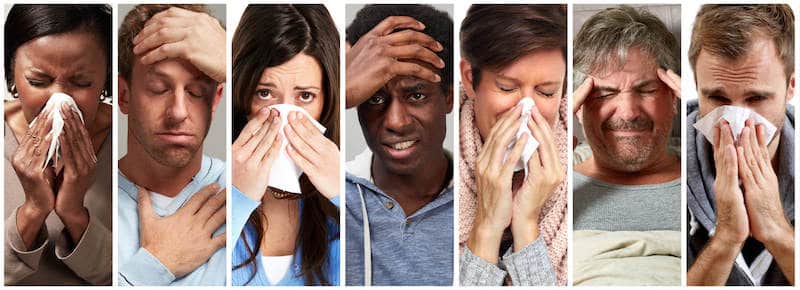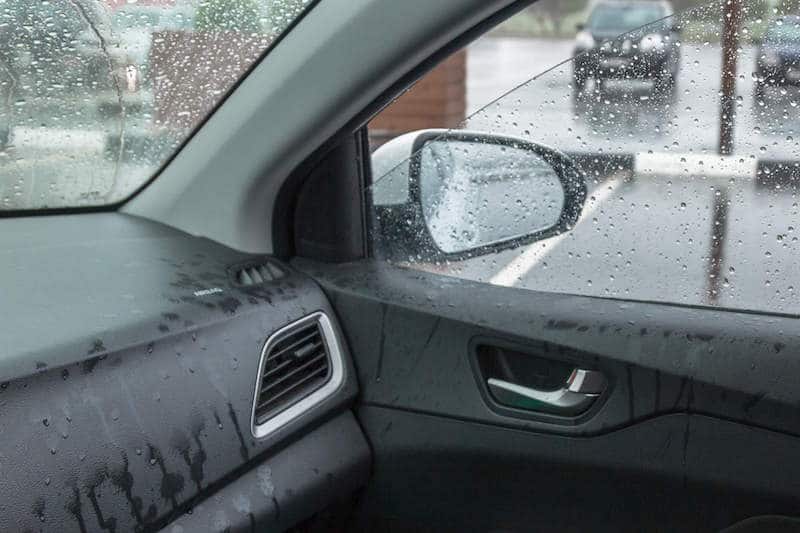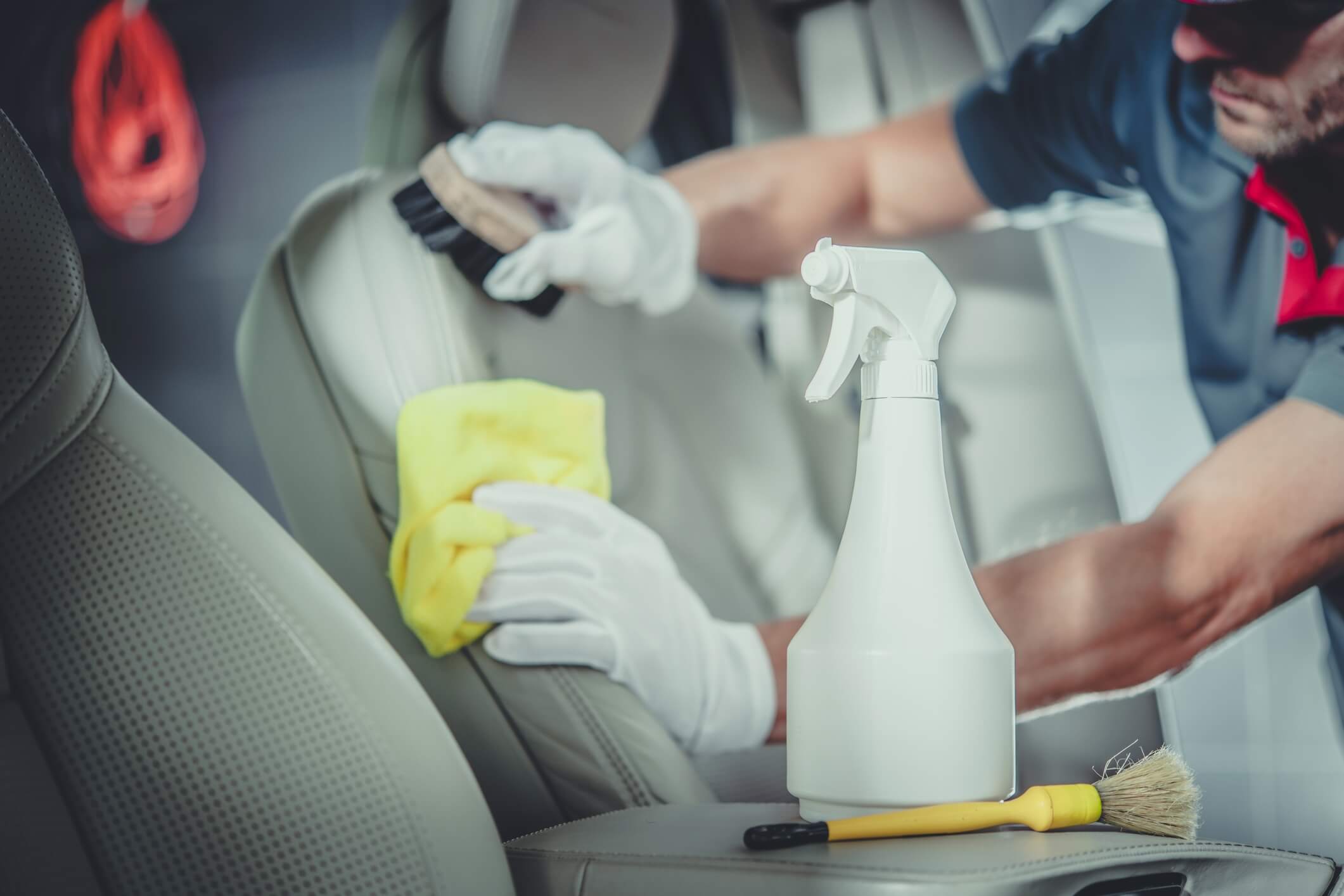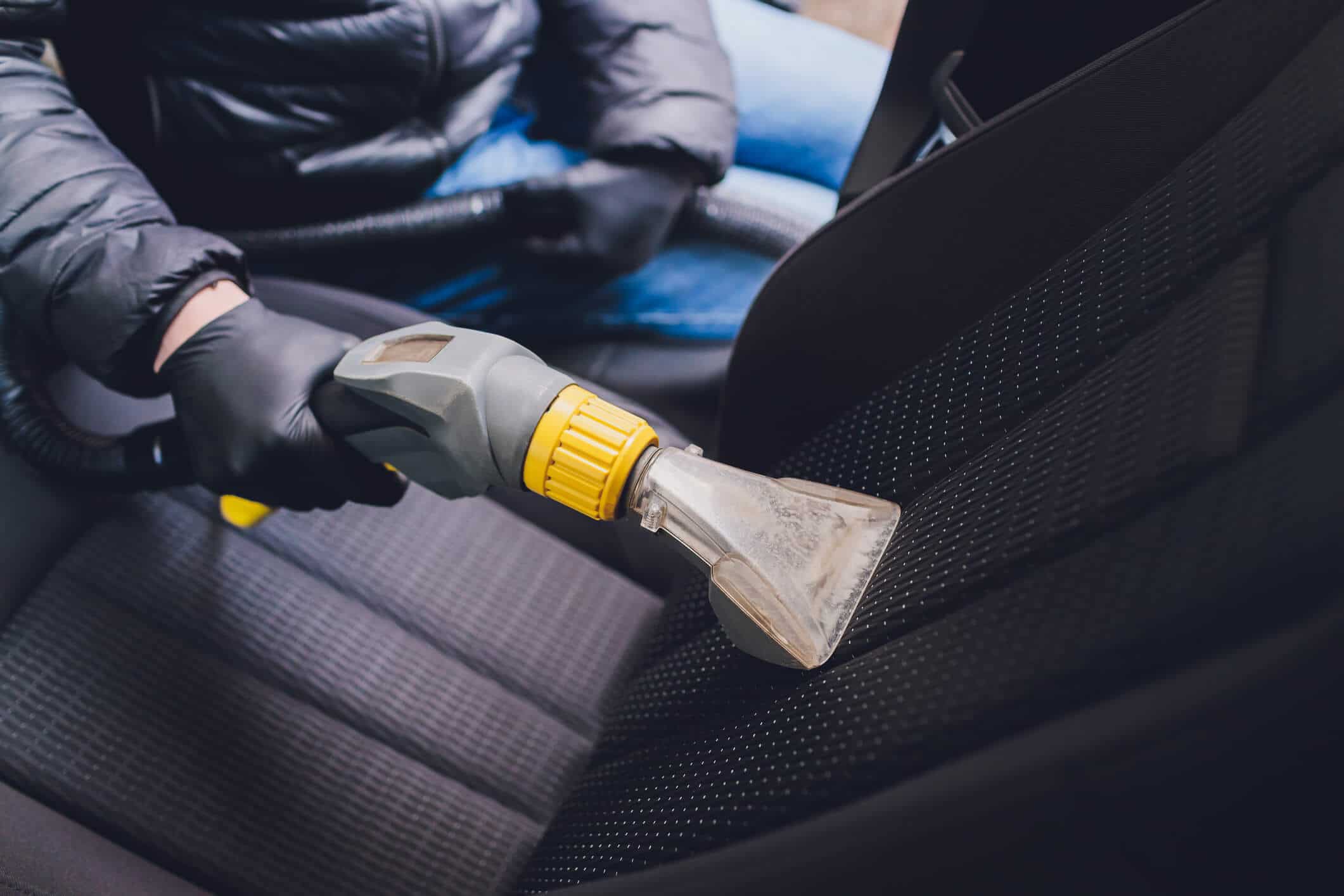You know that magical machine that gets us from point A to point B? The one that upgraded us from walking or riding a horse?
I’m talking about automobiles! The amazing technological advancement that makes our lives just a little bit easier; at least they do when they don’t break down or when we get caught in traffic for two hours. They come in all kinds of shapes and colors with varying engine sizes, gadgets, and features and are designed to fit your every need.
No matter which make or model you go with, luxury, electric, or pre-owned, they all have one unfortunate similarity.
Their ability to host a mold party. While you’re driving down the highway with the windows down, blasting your favorite Kpop song and singing along without a care in the world, mold might be getting up close and personal with Bertha, your trusty vehicle. Not exactly the road trip partner you were hoping for to hit those backup vocals…
When you think about it though, mold falling in love with your vehicle makes sense! It’s unfortunate, but it’s true. So, whether you’ve thought about mold in cars or never considered your vehicle as a prime candidate for mold’s new home, it’s worth taking a good hard look at your personal mode of transportation.
ALL ABOUT MOLD
Mold is the fungus among us. With tens of thousands of species identified so far, mold exists pretty much everywhere. Even inside of your car…

They reproduce by creating microscopic spores and shooting them out into the air. These spores ride the air current wherever that may lead and stick to any surface they come into contact with. Similar to a weed releasing its seeds when a puff of wind blows through, except you can’t see where the spores end up.¹
The presence of mold isn’t a problem until they find a nice, cozy place to live inside. That causes a bit of an issue.
Being the hardy little beings they are, mold spores only need four things to survive and thrive once they’re deposited by the air current: oxygen, a temperature between 40-90 degrees, food (which is pretty much anything), and moisture. ² With the first three conditions being fairly easy to meet almost anywhere, moisture is the last component needed to tip the balance towards mold growth.
Once the mold spore finds a wet or even slightly damp spot, it will maximize on that situation like the people that sprint inside a store when it opens for Black Friday. Except the colonized mold will shoot out more spores that may or may not find other habitable areas. It would be like if that Black Friday shopper cloned themselves and then sent the clones out to find more deals. Pretty soon, that will lead to a pretty hefty pile of marked-down items. Similarly, colonized mold leads to piles of spores on surfaces everywhere. And casually floating around in the air.³
Some mold species can also create microscopic toxins that they also release into the air, making a bad situation even worse.⁴ Between the spores and the toxins, these particles can wreak havoc on the health of those exposed.
Is Mold in a Car Dangerous?
Yes, mold in a car can be unhealthy. Mold exposure can cause a range of symptoms, both acute and chronic.⁵’⁶ The effects vary from person to person. Researchers are hard at work every day attempting to determine exactly how mold affects health, but the massive amount of factors makes it difficult to pin down.

Factors like preexisting conditions, genetics, species of mold, and toxin presence can all dictate how an individual handles mold exposure.
Right now, we do know that anyone with a compromised immune system or developing immune systems is particularly sensitive to mold growth.⁷’⁸
Their bodies are not equipped to handle the onslaught of foreign particles they’re exposed to, which can cause a list of symptoms ranging from mildly irritating to severe. Again, it just depends on the person.
THESE SYMPTOMS CAN INCLUDE:
- Coughing
- Sneezing
- Headaches or Migraines
- Brain fog
- Chronic Fatigue
- Respiratory Issues
- Neurological Issues
- Digestive Problems
While these are common symptoms, they're far from the only ones on the list.
Regardless of sensitivity level, eventually, everyone’s body will reach its toxic load. The immune system can’t keep up with constant exposure to these particles, which is why dealing with mold correctly and as soon as possible is so important.
How to Determine if There’s Mold in a Car
The first step toward ensuring that a vehicle is safe and free from contamination is to know what to look for. When it comes to figuring out if mold in a car is occurring, using the senses can help pinpoint a potential problem.
Initially, conduct a visual inspection of the vehicle. Mold can come in a variety of colors and textures, so any abnormalities could be a potential colony. Common colors include green, white, grey, black, brown, red, or a combination of hues. As for textures, growth can often appear velvety, fluffy, slimy, or powdery.
Not all mold in a car will be visible, though. The colony could be in a hidden area or blend in with the surface it’s growing on. In this case, smell all around the interior of the vehicle. Mold growth often creates an earthy, musty, damp smell due to the gases it releases called microbial volatile organic compounds (MVOC).¹²
Finally, if neither of these is present, it still doesn’t mean the vehicle is safe. Pay attention to your body as well. The body is hardwired to warn us should something in the environment not be safe. If chronic symptoms flare up while in the vehicle or after driving around in it, it could be the body's alert that there’s a contamination issue within the car.
For any driver that can check off one of the boxes above, it’s a fairly good indicator that there’s a contamination problem. To limit exposure and ensure that indoor space is safe once again, the problem should be dealt with quickly and correctly.
Test the Dust
While the list above can help serve as a baseline, the best way to determine if there might be mold in your vehicle is to use The Dust Test.
Gravity brings particles like mold spores, mycotoxins, and endotoxins down to horizontal surfaces like floors, car seats, and dashboards. Where dust collects, so do these indoor contaminants. Testing this dust with The Dust Test will help determine what is in your car. It can indicate if a problem needs to be addressed or give you peace of mind that you’re driving around with safe air.
MOLD IN CARS
Bertha may not be your first thought when it comes to a place for mold to grow, but it’s definitely on the top of the fungus’ list for best homes.⁹

Just think about it. Your vehicle is constantly out in the elements, dealing with muddy shoes or pounding rain coming in from a cracked window. Eating and drinking inside and potentially leaving behind a few crumbs or spills. The air conditioning turns on frequently. Pets climb in and out. Rolled-down windows let in all kinds of particles.
You get the picture- it’s can vary easily turn into mold’s dream house. And most of us are in these cars every day, driving to work or dropping the kids off at school. For some, there’s the hour commute to work or the trip back and forth to the gym. Unless you use public transportation, bike, or work from home, chances are you spend a decent amount of time inside your vehicle.
Now picture mold spores floating all throughout the air inside of your trusty car. Tack on that the average person breathes in over 20,000 breaths a day and you’ve got yourself a bit of a health hazard. For you and for anyone else riding along with you.
Plus just thinking about mold growing all around you in the tight confines of your car is kind of gross… Sorry fungi lovers! Not quite the extra feature we’re looking to add.
GOT A MOLDY CAR?
Mold in cars can happen at any time to anyone. All it takes is that special sauce- aka moisture. And because mold grows within 24-48 hours, it’s super easy to occur!
If you have visible mold in your car right now, or if you suspect you might have a moldy car, you need to tackle the problem asap. Remediation for a vehicle is tricky because you don’t always know exactly how bad the problem is. If you see mold, chances are that it might be elsewhere, like inside of the carpet.
The best first step to deal with mold in cars is to hire a qualified mold inspector to come to assess the situation. They’ll be able to provide a detailed picture of what mold is present, how bad the problem is, and if other particles like mycotoxins are also hanging out inside your car. With this information, you can decide whether you’re up to handle the moldy problem, or if you should hire a professional.

REMEDIATING BY YOURSELF
If there’s only one little mold issue, you could tackle the problem yourself as long as you follow the proper protocols for removing mold instead of just killing it. That involves using protective gear, EPA-approved products, and a proper contents cleaning method. You should also keep the vehicle in the sunlight to dry it out quickly and open the doors and windows to make sure those particles you’re busting up don’t get trapped inside.
Remember though! The visible mold produced spores, and potentially toxins, the entire time it was growing, so cleaning every surface properly in the car will ensure all of the contamination is removed. No contamination means a healthy environment to drive around in.
BRINGING IN A PROFESSIONAL
If the mold problem goes deep into the carpet, or you want to air on the side of caution, hiring a professional vehicle remediation team is your best bet. They can help determine if the carpet needs to be replaced, if the seat upholstery needs help, and if a source exists that caused the water event in the first place. Not fixing the source will just allow moisture to build up again, and leave the door wide open for mold growth.
Make sure to choose a qualified remediation team to tackle the project, though, because not all remediation teams are equal. The company you go with should prioritize your health and be fully equipped to use that testing roadmap to completely remediate your car. That means fixing the source of the problem, taking care of the mold, and eliminating all contaminants inside including mycotoxins. They’re overachievers and can’t be remediated in the exact same way mold can, so they require a special cleaning protocol.
When they’re finished, you should feel confident that Bertha is safe, clean, and uncontaminated.
Remediation can be a costly and stressful undertaking, which is why preventing mold growth in the first place is your best bet.
PREVENTING MOLD IN CARS
Stopping mold from growing in your car can save you time and money, but it can also help prevent any adverse health reactions from occurring. It may seem like a hassle at first, especially for those of us who struggle to keep a clean vehicle. I am personally a victim of criticism for keeping a slightly dirty car… We can’t be perfect all the time, right? But, a few extra steps can help create a mold-proof vehicle.

PREVENTATIVE ACTIONS TO TAKE TO STOP MOLD IN CARS ARE:
- Outfit your car with waterproof add-ons like rubber floor mats and seat covers. Just make sure they’re the proper size!
- Keep up with the AC and heating system. Make sure a mechanic checks it over regularly to make sure it’s working properly.
- Say no to snacks and drinks. Try to avoid eating and drinking while driving as much as possible so you don’t have to deal with spills or crumbs.
- Double and triple-check the windows. When you get out of your car, make sure those windows are rolled up tight so no outside moisture can find its way in.
- Clean frequently. Maintain a cleaning schedule so that mold doesn’t have additional food sources and to help make sure there aren’t any damp items laying around.
- Use EPA-approved antimicrobial cleaning products. Spraying the interior down with these cleaning rockstars kills any spores just hanging around and discourages growth.
- Consider investing in an air purifier or dehumidifier. These tools can help filter out particles from the air and keep the humidity/moisture levels low inside your vehicle.
- Clean up any water asap. Moisture happens! When a water event occurs, wipe it up as soon as you can.
Keep in mind, these are just a few steps you can take to stop mold in cars. The biggest thing to keep in mind while mold-proofing is to reduce the amount of moisture in a car as much as possible. They are cars so avoiding water all of the time is impossible, but any area that stays wet for 24 hours can become a home for mold. Also, make sure to take away as many food sources as possible which means a clean car is a healthy car.
A MOLD FREE LIFE (AND CAR!)
Dealing with mold is no joke. Society may not give mold the spotlight it deserves yet, but that doesn’t mean we can’t actively take steps to remove it from our lives. Exposure to mold spores is unavoidable in life, but it should be our roommate or passenger.
Mold in cars may not be the first thing you think of when considering areas to check for colonization, but it absolutely can occur. Mold might be in your car right now! With the effect it can have on your health and your family’s health, it’s worth the extra steps to ensure your car is a safe environment.
- Centers for Disease Control and Prevention. (2020, August 11). Basic facts about mold and dampness. Centers for Disease Control and Prevention. Retrieved August 17, 2021, from https://www.cdc.gov/mold/faqs.htm.
- Environmental Protection Agency. (n.d.). Mold. EPA. Retrieved August 17, 2021, from https://www.epa.gov/mold.
- Lstiburek, J., Brennan, T., & Yost, N. (2002, January 15). Rr-0208: What you need to know about mold. Building Science Corporation. Retrieved August 18, 2021, from https://www.buildingscience.com/documents/reports/rr-0208-what-you-need-to-know-about-mold/view.
- World Health Organization. (n.d.). Mycotoxins. World Health Organization. Retrieved August 26, 2021, from https://www.who.int/news-room/fact-sheets/detail/mycotoxins.
- Environmental and Occupational Health Assessment Program, & Environmental and Occupational Health Assessment Program, & Health Science Section, Mold Basics for Primary Care Clinicians (2009). Hartford, CT; Connecticut Department of Public Health. , H. S. S., Mold Basics for Primary Care Clinicians 1–10 (2009). Hartford, CT; Connecticut Department of Public Health.
- Bush, R. K., Portnoy, J. M., Saxon, A., Terr, A. I., & Wood, R. A. (2006). The medical effects of mold exposure. Journal of Allergy and Clinical Immunology, 117(2), 326-333.
- Curtis, L., Lieberman, A., Stark, M., Rea, W., & Vetter, M. (2004). Adverse health effects of indoor molds. Journal of Nutritional & Environmental Medicine, 14(3), 261-274.
- Dillon, H. K., Miller, J. D., Sorenson, W. G., Douwes, J., & Jacobs, R. R. (1999). Review of methods applicable to the assessment of mold exposure to children. Environmental Health Perspectives, 107(suppl 3), 473-480.
- Etzel, R., & Rylander, R. (1999). Indoor mold and Children’s health. Environmental health perspectives, 107 Suppl 3(Suppl 3), 463. https://doi.org/10.1289/ehp.107-1566224.
- Kumar, P., Lopez, M., Fan, W., Cambre, K., & Elston, R. C. (1990). Mold contamination of automobile air conditioner systems. Annals of allergy, 64(2 Pt 1), 174-177.
Still Have Questions?
A member of our team is here to help! Click on “Get Started ➤” below to book a consultation with a member of the HOMECLEANSE team. We have a few quick questions that will help us put together a roadmap to solve or prevent all of your mold problems.
Two minutes of your time could lead to better health for you and your family.
Must-Have Indoor Air Quality Tools
-

EC3 Laundry Additive
Add EC3 to every rinse cycle to rinse away mold, bacteria and musty odors from...
-
$23.00 SHOP NOW -
Sale

Intellipure Compact Air Purifier
Buy one Compact, get one free. Simply add one to your cart, and a second...
-
Original price was: $299.00.$199.00Current price is: $199.00. SHOP NOW -

Intellipure SuperV Whole House Air Purifier
Turn your HVAC into a filtration system, removing 99% of ultrafine particles including airborne mold,...
-
$2,000.00 – $2,995.00 SHOP NOW -

HomeCleanse Cleaning
Take your cleaning to the next level buying all the tools we use to keep...
-
$299.00 – $549.00 SHOP NOW -

Mold & Bacteria Contents Cleaning
Remove harmful pollutants that accumulate in the dust of your home. (Options available for renters...
-
$99.00 – $349.00 SHOP NOW -

EC3 Mold Solution Concentrate
Micro Balance EC3 Mold Solution Concentrate is a natural botanical that removes mold spores, bacteria,...
-
$33.00 SHOP NOW -
Sale

Industry-Leading Intellipure Ultrafine 468
The Intellipure® Ultrafine 468 features our proprietary DFS technology, which traps and eliminates potentially harmful...
-
Original price was: $999.00.$499.00Current price is: $499.00. SHOP NOW -

The Dust Test
The Dust Test is a comprehensive at-home test that helps you identify mold and toxins...
-
$274.00 SHOP NOW -
Sale

EuroClean 4 Gallon Hepa Vacuum
The Euroclean GD930HSP is a 4 Gallon Dry HEPA Vacuum that meets the EPA's standards...
-
Original price was: $849.00.$619.00Current price is: $619.00. SHOP NOW -

AprilAire E080 Professional Dehumidifier Bundle
Includes all the dehumidifier accessories you will need. Our Aprilaire E080 comes with a drain...
-
$1,499.99 SHOP NOW
